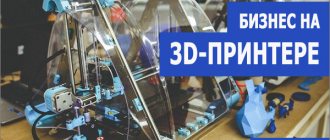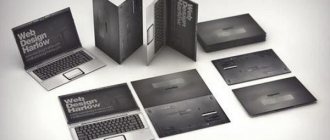Printing a variety of pictures on ready-made T-shirts is an excellent option for your own business. Both beginners and professionals in the printing business will feel great in this niche. It does not require too large capital investments, has high profitability and therefore quickly pays for itself. Equipment for printing on T-shirts is the first thing to think about, but the choice depends on the technological methods used.
Register for a free intensive
Passive income on websites
Register for a free intensive course and learn how to get passive income on websites, even if you don’t understand anything about it
Register
How to start a T-shirt printing business
In order for your business to start functioning fully, you will need:
- A computer on which any graphics editor, for example Photoshop, is installed.
- The printer required to transfer the selected design directly to the surface of the T-shirt. This can be a traditional inkjet printer equipped with a CISS, or a printer with conventional cartridges.
- Thermal press
- Plotter for cutting.
But, if you decide to somewhat diversify the range of products offered, then we’ll talk in more detail about T-shirt printing technologies and the required equipment.
The first stage of creating a print
You should start by working out the niche in which you will work.
Of course, you can simply create a beautiful design on any topic, but there will be problems selling it.
The print design should be related to a specific theme.
For example, I am interested in cryptocurrencies. This topic is close to me, I know what is trending now. I can create a print that will appeal to that audience.
I know where this audience lives, so I know where I can sell my designs.
But if you create a beautiful abstract design, then I don’t even know where you need to advertise to sell it.
As you may have guessed, there are countless themes for creating designs.
For example, work (police, firefighters, doctors, etc.), hobbies (fishing, hunting, coins, stamps), sports, etc.
It seems to me that most often ladies buy T-shirts with prints for their boyfriends as a gift for a certain date (February 14, February 23, DR). Although I could be wrong, guys, write in the comments if you bought T-shirts with prints.
Therefore, I would create designs specifically for a male audience.
Once you learn how to create and sell your products, you can consider the niche of hype news.
What is important here is the speed of creating and distributing advertisements for your products, and this requires some experience.
What equipment to choose for thermal transfer printing on T-shirts
This technological method involves applying a picture to a material using an intermediate medium. Currently, this is the most popular option when printing pictures on fabric surfaces and ceramic products, in particular, mugs.
Thermal transfer technology demonstrates a number of undeniable advantages:
- allows you to very quickly transfer the required image to the selected surface, preserving the original color palette;
- It is not necessary to order a minimum circulation; printing of single copies is possible;
- the resulting color image is quite stable during the washing process.
What equipment do you need to purchase for printing on T-shirts and mugs in this case? So, you will need:
1) Printing device With this pattern transfer technology, almost any color printer is suitable. At the same time, the durability of the applied pattern depends not only on the quality of the thermal transfer paper, but also on the properties exhibited by the paint itself. The most durable designs are obtained if you choose a printer that prints with solid, water-resistant inks that are not afraid of heat. To the category of such devices that provide high-quality thermal transfer,
relate:
- laser color printer;
- sublimation printer;
- thermal portable printer.
2) Intermediate media Perhaps the most important component of the technology under consideration is considered specialized transfer paper. It is she who takes on the functions of an intermediate carrier of the future image. What is she like? The front side of the paper is covered with a layer of thin film, which, with a picture printed on it, is transferred to the surface of the selected material. The paper itself acts as a substrate for the film, and also provides the required rigidity for working with the printing device. It is worth considering that thermal transfer paper has its own characteristics, which affect not only the requirements for printing devices, but also the quality of the thermal transfer. The choice of this paper depends on what kind of picture (matte or glossy) you need, as well as the shade of the future base material. 3) Thermal transfer press This equipment differs in its design, as well as the heating surface area, which allows you to buy a device that fully meets your technological requirements.
Be sure to read the article “T-shirt Printing Options”!
Necessary equipment
A T-shirt with an original printed design or text can be made in two ways:
- A T-shirt with the help of a textile printer can have a finished printed design at the output. But such equipment works very slowly, so it cannot be used for large volumes of orders. In addition, it does not allow printing on souvenir products (magnets, mugs, etc.).
- Using a film on which a design is applied and transferred onto a T-shirt using a heat press.
So, the minimum set of equipment and furniture consists of: a computer, a scanner, a high-quality color printer, a heat press, an electric grill, a cutting plotter, a digital camera, a telephone, chairs, tables, cabinets, shelving and a store display for demonstrating manufactured products.
Necessary equipment for screen printing (screen printing) on T-shirts
Another option is to print a design on ready-made T-shirts. Screen printing additionally allows you to apply color designs to the surface of almost any material. This application technology, if we consider its production side, is universal.
The equipment required for this type of printing can be represented by either manual machines or a fully professional (automated) set of equipment. The only difference between them is the speed of production. An automated press is most advantageous for producing large batches, but a printing press alone will not be enough. You will need to purchase the entire set of equipment. And this:
- the printing machine itself;
- equipment needed to create a printed stencil;
- drying equipment;
- additional devices.
Silk-screen printing technology is applicable for printing on any material. In this case, it does not matter at all what fabric will serve as the base: synthetic or a completely natural cotton surface.
How does sublimation work on fabric products?
Another method of applying a design to textiles is thermal transfer printing or thermal sublimation. With this method, the design is first printed onto a temporary medium (ribbon), and then transferred to fabric under pressure and temperature.
The temporary medium most often used is paper , which “burns out” under the influence of high temperature, leaving only paint and the necessary image on the material. The print is of quite high quality, the print does not fade or wash off for a long time.
What you need to buy for heat sublimation
Compared to silk-screen printing, thermal sublimation requires significantly less equipment:
- A computer or laptop with graphics programs installed. This is where the future print is prepared for printing. From 12 thousand rubles.
- Laser printer. Used to print a design on intermediate media. Inkjet printers are not suitable, as their image quality is significantly lower, and there is also the possibility of uneven ink application. When purchasing a printer, check whether it can print when charged with special ink. From 12 thousand rubles plus paints.
- Sublimation press - from 30 thousand rubles. The press presses the ribbon against the material with a high degree of heat, as a result of which the image is transferred.
Sublimation printing is quite high quality; the print does not fade or wash off for a long time.
Positive properties of thermal sublimation on textiles
- The image is of high quality, does not fade for a long time and is not washed off.
- A relatively simple method of work to organize.
- Suitable for applying simple logos and inscriptions, as well as for more complex designs.
- Sublimation is available even with little capital.
- The resulting print is elastic and at the same time intangible to the touch.
Disadvantages of thermal transfer printing
- The pattern will stick only to synthetic fabrics. Cotton is not suitable for heat sublimation - the design will be erased after the first wash. Therefore, along with equipment and consumables, you need to purchase batches of T-shirts of different sizes.
- In addition to restrictions on fabric composition, there is also a restriction on color. Thermal transfer printing works well for white T-shirts, but much less well for color T-shirts.
- Unfortunately, determining which paint performs well when printing and which performs poorly can only be determined, unfortunately, by trial and error.
What equipment is best for sublimation printing on T-shirts?
Sublimation is the simplest and least investment option for textile printing. But there is one caveat: sublimation printing is only possible on synthetic materials. Drawings applied in this way to natural fabrics lose their color very quickly. The sublimation method is also widely used
when printing images on mugs.
Equipment you will need to buy:
- Sublimation thermal press. It is this device that transforms the paint into a gaseous state when it is transferred to the desired surface.
- Computer. It is necessary in the process of editing a picture, as well as outputting it to a printing device.
- A printer. Which printer to buy is most suitable for printing on T-shirts using sublimation? Our advice: buy any inkjet color printer.
- Special ink. Specialized sublimation ink freely transforms into a gaseous state when heated.
- Sublimation paper
Also a necessary piece of equipment for this printing technology. It has a looser structure due to increased porosity. During the heating process, the pores become wider, trapping the dye inside. After the surface of the product cools down, they automatically close and the picture remains on the surface of the paper.
Sublimation printing is done on T-shirts made of two-layer fabric: the top is polyester, the inside is cotton.
What is the price?
Silk-screen printing on textiles (T-shirts, sweatshirts, polos, tailoring, umbrellas)
| Number of products | 1 color | 2 colors | 3 colors | 4 colors | 5 colors | 6 colors | CMYK |
| 50 | 49.50 | 59.40 | 70.40 | 81.40 | 93.50 | 104.50 | 104.50 |
| 100 | 44.00 | 49.50 | 59.40 | 70.40 | 81.40 | 93.50 | 93.50 |
| 200 | 33.00 | 38.50 | 47.30 | 55.00 | 60.50 | 67.10 | 67.10 |
| 300 | 24.20 | 29.70 | 35.20 | 41.80 | 47.30 | 52.80 | 52.80 |
| 500 | 20.90 | 26.40 | 30.80 | 36.30 | 42.90 | 48.40 | 48.40 |
| 750 | 17.60 | 23.10 | 28.60 | 34.10 | 39.60 | 45.10 | 45.10 |
| 1 000 | 15.40 | 20.90 | 26.40 | 33.00 | 37.40 | 44.00 | 44.00 |
| 2 500 | 14.30 | 19.80 | 25.30 | 31.90 | 36.30 | 42.90 | 42.90 |
| 5 000 | 11.00 | 18.70 | 24.20 | 28.60 | 35.20 | 40.70 | 40.70 |
| 10 000 | 9.90 | 14.30 | 17.60 | 25.30 | 29.70 | 38.50 | 38.50 |
| 20000 | 8.80 | 13.20 | 15.40 | 23.10 | 28.60 | 34.10 | 34.10 |
| 50000 | 7.70 | 11.00 | 14.30 | 16.50 | 25.30 | 31.90 | 31.90 |
| Sample | 1650.0 | 2640.0 | 3850.0 | 5060.0 | 6325.0 | 7590.0 | 7040.0 |
- Prices are indicated in rubles for one printing position on one side, excluding the cost of the product;
- Production of TPF for 1 color. — 500 rub;
- For circulations of more than 1000 pieces, TPFs are produced free of charge;
- Individual packaging of T-shirts - 5 rubles/piece;
- Unpacking/packing of complex products increases the cost of circulation from RUB 3.00/piece. up to 10.00 rub./piece;
- Sorting of products and packaging by size +3 RUR/piece;
- The original layout is provided by the customer in vector form in .cdr or .ai formats;
- The standard order period is 10 working days from the moment the sample is approved and payment is received;
- The standard sample production time is 5 working days;
- Printing on customer products: + 2 products for adjustment + acceptable defects up to 3%;
- Printing with special paints + 25%;
- When printing on dark fabrics, it is necessary to take into account the presence of an additional substrate layer;
- The cost of printing does not include the production of a layout;
- Approval of a sample based on a photograph +500 RUR
How much can you earn
According to the customer’s wishes, an individual image can be applied to the T-shirt, and such a service costs at least 500 rubles. The cost of each clean T-shirt ranges from 300 to 800 rubles, depending on the quality of the material. The finished product will be sold at a price of 1000 rubles or more. Selling only 10 units of goods per day, the revenue will be 10,000, and per month - 300,000 rubles. After deducting the costs of purchasing clothing, printing supplies, taxes and advertising, we get approximately 200,000 rubles in net monthly profit from a small-scale business.
What does the method of direct printing on material mean?
Direct fabric printing is a common method of transferring prints to textile products. This method involves directly impregnating the fabric with dye and setting the design using high temperatures. The direct printing method is inexpensive and suitable even for novice entrepreneurs.
What you need for direct printing on fabric
The list of equipment for direct printing is also very simple:
- The printing machine is a special printer for direct printing. The printer directly transfers ink evenly into the fabric. Prices for this device vary greatly depending on the format of the available images, that is, the print size (A3 or A4) and the manufacturer. From 100 thousand rubles.
- Heat press for fixing images on fabric. The simplest horizontal apparatus with heated plates is sufficient. From 15 thousand rubles.
- A computer or laptop for image processing (from 12 thousand rubles), as well as a scanner for digitizing client photos (from 3 thousand rubles).
Positive properties of direct printing on fabric
- Available for materials of any color, including black. You can use cotton, chintz, linen, denim and any fabric that is resistant to heat up to 150 degrees.
- It does not require large initial capital and is quite simple to organize.
- Provides a bright and high-quality image.
- High wear resistance. The print does not wash out, does not fade, does not crack.
Disadvantages of direct printing technology
The only drawback of this method of applying images to fabric is the specific equipment that is quite difficult to buy. Most likely, you will have to order a direct printing machine directly from manufacturers and pay for delivery.
How much money do you need to start a business?
The main thing in this activity is to choose the right equipment. These are the main expenses that a new entrepreneur will have. The minimum costs for starting a business start from 200,000 rubles and can reach more than 1 million. You can purchase used equipment, since the price of a new professional printer reaches several hundred thousand rubles or more. To rent a room, you should set aside an amount of at least 20-30 thousand rubles.
Equipment for creating drawings
The list of required materials will depend on the choice of a specific image application technique. You need to put thick paper or something similar inside the T-shirt . This is necessary so that the fabric is straightened and does not move during operation. If the design is applied with paints, then a substrate will be needed to prevent stains from appearing on the back.
When using thermal transfer printing, you will need special paper to print the image and a color printer . Acrylic paints are suitable for hand painting a T-shirt . They are water-based, odorless and do not damage the fabric. They will need brushes and a pencil to mark the outline . To work with stencils, spray paint is used.
If such an activity is considered as a business idea, then more efficient and expensive equipment will be required. To do this you will need a heat press and sublimation printer , as well as consumables for them. The workplace must be equipped with a computer for preliminary preparation of the drawing for printing.
What documents are needed to open
It is not advisable to register a company; for this type of business it is quite possible to get by as an individual entrepreneur. This simplifies document flow and reduces the share of tax payments in product costs. To register you need to collect and prepare:
- personal passport of the person in whose name the individual entrepreneur will be registered;
- a copy of the TIN assignment;
- receipt for payment of the registration fee (800 rubles);
- certificate of application of the simplified tax system (if you choose the simplified system);
- application in form P21001.
Selecting and preparing a T-shirt
Before you make a print on a T-shirt at home, you need to prepare everything for work. It is especially important to choose the right base; the quality of the drawing depends on it. It is advisable that the T-shirt be made of natural fabric, at least 80% cotton. This fabric produces a clear print. Synthetics do not hold paint well and are difficult to paint. In addition, some methods of applying a design require the use of a hot iron, which can damage the fabric.
The T-shirt can be any color. But it is desirable that it be plain, without factory prints and patterns. When using thermal transfer printing, it is recommended to use white fabric.
The T-shirt should be loose. If the style is tight, the pattern will quickly crack.
Before you make a print on a T-shirt with your own hands, you need to prepare it. If the item is not new, you can simply iron it well so that the base is even. Unworn items must be washed. This is important because:
- factory products are impregnated with compounds for better storage;
- they are often starched to keep their shape;
- Cotton may shrink after washing, and then the pattern will be distorted.
After washing, the T-shirt should be dried and ironed well. Then it is pulled onto a hard, smooth base, but the fabric should not be stretched too much. This could be a sheet of cardboard, thick paper, or a piece of laminate. With thermal transfer printing, you can simply lay out the T-shirt on an ironing board or on a table covered with fabric.
When using paints, it is necessary to place a backing inside the T-shirt so that the design does not bleed onto the back.
Before applying the print, the T-shirt must be washed and ironed










